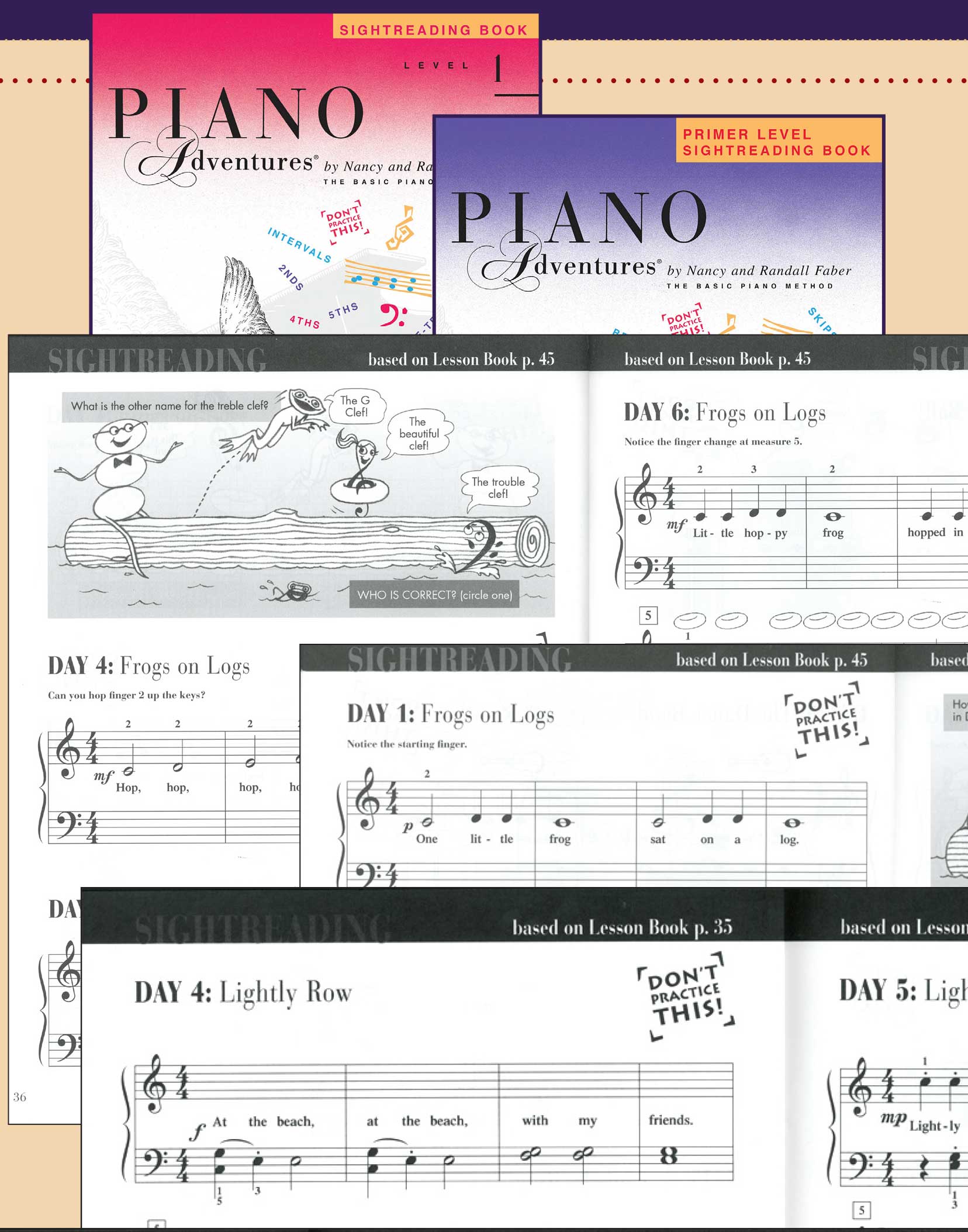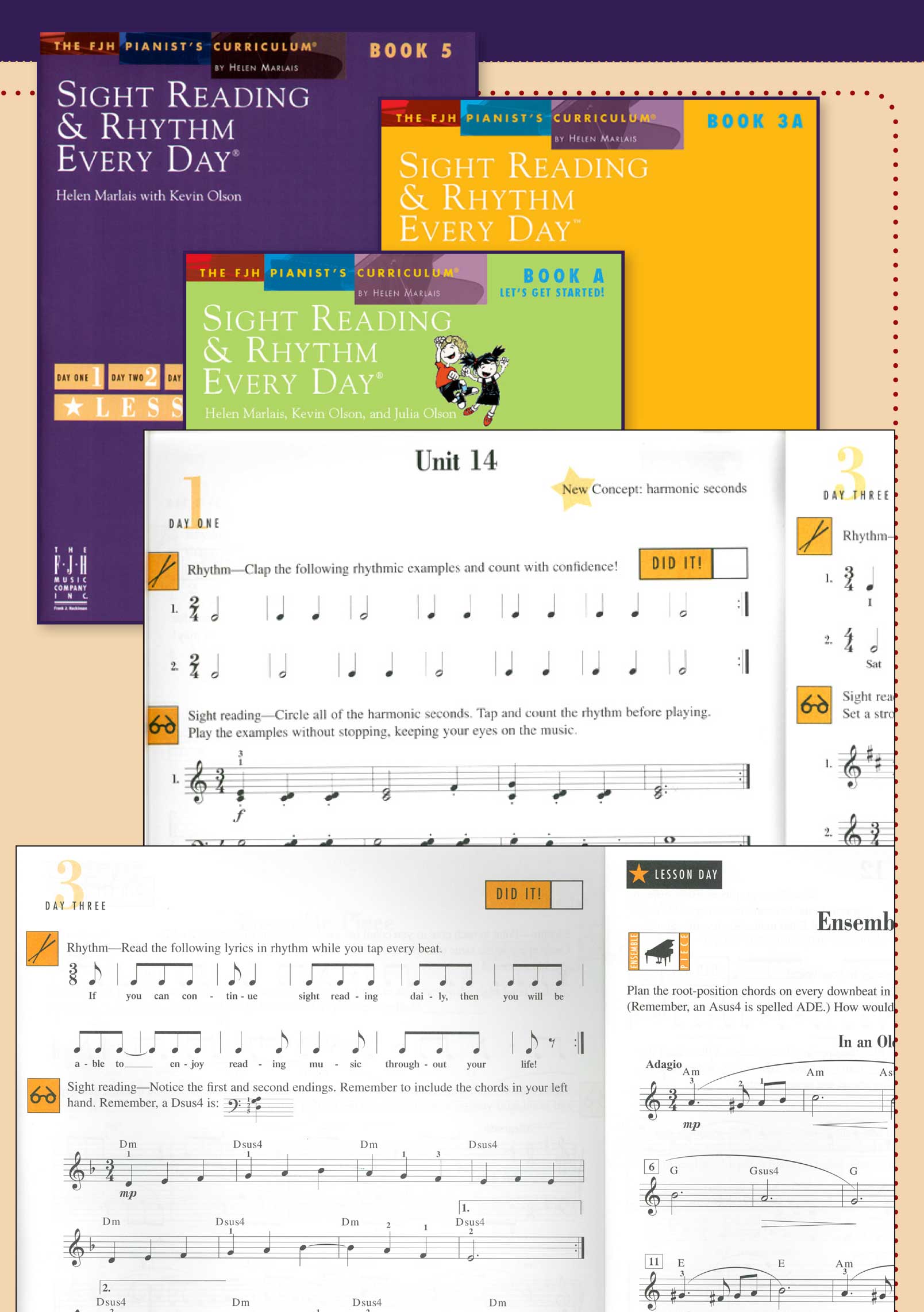It seems that right from the earliest ever graded piano examinations students have been tested on their ability to play music on extremely short notice. For every student who protests that they will never be asked to perform in this manner in ‘real life’ there’s a real life pianist with an anecdote of an accompaniment being pressed into their hand as they’ve walked out onto the stage.
We now know that the ability to play well at sight is an ability that means students will play for the rest of their lives. If you can’t play by ear then sight reading is your only way of getting instant gratification at the piano, and the 21st century is all about (faster-than-)instant gratification.
It’s the use-it or lose-it principle: the more you do it the better you get.
But whereas children start learning to read letters and words some 2, 3 or 4 years after they start talking, we expect our piano students to develop reading at the same time as they are learning to play. It’s a steep learning curve, and the examination sight reading test is where even strong students come undone.
Examination boards have tried to help out by making specimen tests available for practice prior to assessment, and this at least helps teachers and students come to terms with the degree of difficulty of the test.
Much more helpful have been the various sight reading exercise books that have been published over the past 20 or so years. Haven’t noticed them? Here’s our guide to the best of what’s available in 2012.
If You Can’t play by ear then sight reading is your only way of getting instant gratification at the piano….
PIANO ADVENTURES SIGHT READING
Brand new from Nancy and Randall Faber, their first ever Sight reading Books. Designed to match the Primer and Level 1 Piano Adventures Lessons, these books have all kinds of early sight reading uses.
- Chunky, 96 page books, with 21 weeks of piece-a-day exercises.
- Students mark a big X through the music once they’ve played it through a couple of times – satisfying to say the least!
- Each week’s exercises are based on a single piece from the Lessons Book – students are reinforcing their reading skills with familiar concepts, actions and notations.
- The Primer Level Sight Reading Book begins halfway through the Primer Level Lesson Book (when reading on the grand staff is introduced).
- The Level 1 Sight Reading Book includes reading chords, playing hands together, reading slurs and staccato, reading accidentals, and reading harmonic intervals within a five-finger position – skills which are up to AMEB Grade 3 standard!
Use these books with:
- Students learning via the Piano Adventures method (you can match the exercises to the repertoire).
- Beginners in the first years learning with any method (the approach is systematic and not eclectic).
- Students preparing for their first piano examinations (Primer Level will take students far beyond Preliminary requirements)
- Transfer students who cannot read a note of music.
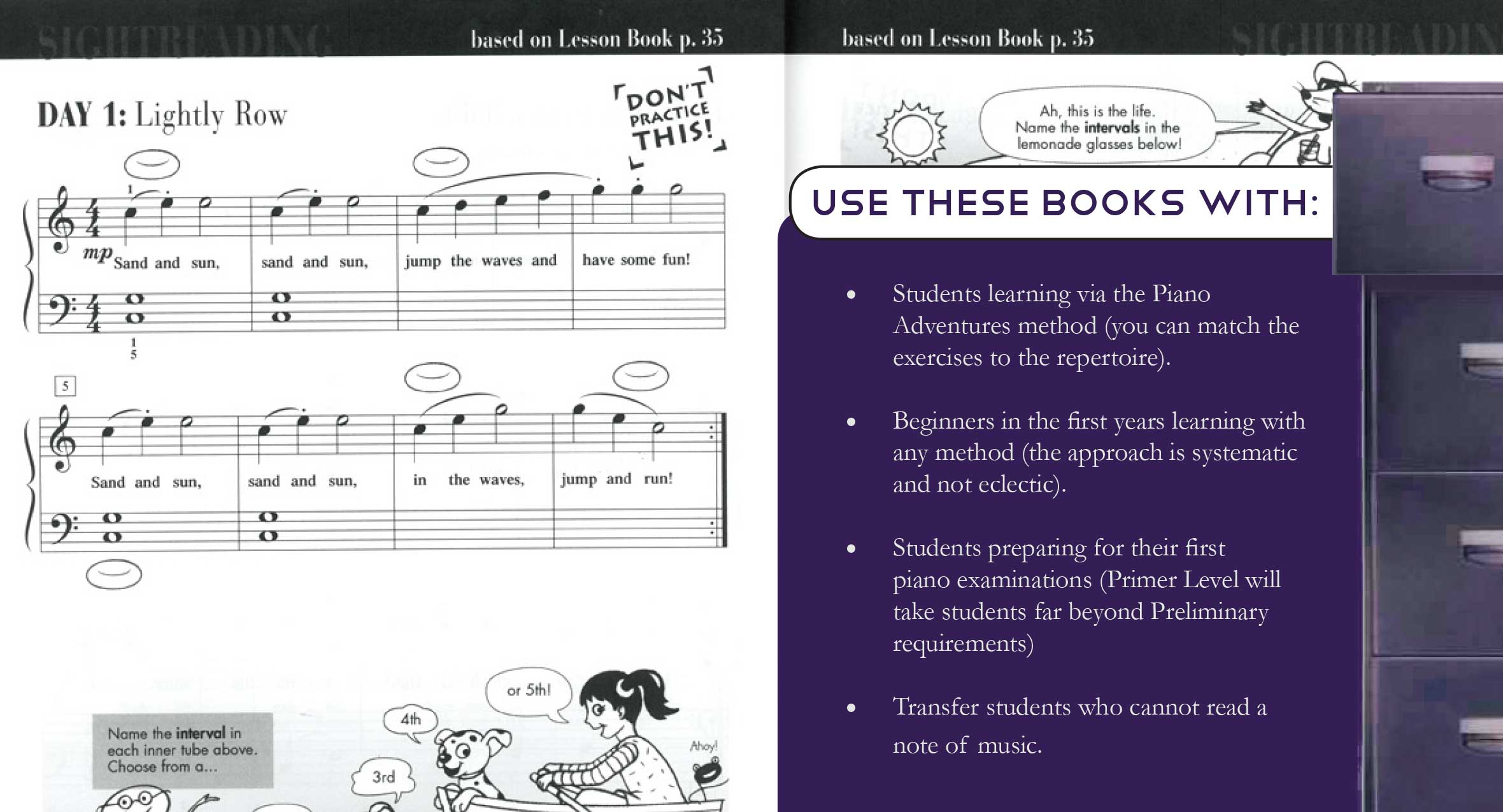
SIGHT READING & RHYTHM EVERY DAY®
Another series you may not have seen before is the 2009 edition Sight Reading & Rhythm Every Day series, from The FJH Pianist’s Curriculum. Written by Helen Marlais (author of Succeeding at the Piano) and Kevin Olson, this series starts at easier-than-AMEB-Preliminary standard in Book 1A, and ends up at roughly (but slightly easier than) AMEB Grade 5 standard in Book 6.
- 5 days of activities for at-home practice, and specially written Lesson Day activities for the teacher and student to do together. 10 weeks/units in a book (although you might want to spread this over 12-15 weeks).
- Rhythm is separated from melody, with students asked to clap, speak lyrics, add bar lines, circle patterns, tap two-handed patterns and to quickly memorise rhythmic patterns!
- Lesson Day activities include a sight reading exercise with a teacher accompaniment – fun!
- Notation Reviews are included toward the end of each book, a kind of theory page that is targeted at notation literacy issues.
- As the series progresses students are asked to analyse harmonies as part of their sight reading preparation – the series is based on five finger positions and I-IV-V harmonies.
- From the middle of Book 4B onwards students are asked to realise a left hand part from a chord chart in at least one exercise a week.
Use these books with:
- Students taking NZMEB or ANZCA exams where realising a chord chart is part of the test.
- Students who are not overwhelmed by instructions, or students whose parents work with them in their practice sessions – there are a lot of different tasks to do on each page, and students with word-reading issues will get bogged down.
- Students wanting a better understanding of diatonic harmony – in the later volumes this is like a junior keyboard harmony course (in the best sense!).
- Students who struggle to read key signatures – this series works through each of the keys very thoroughly, right from the start of the series in Book 1A!
JOINING THE DOTS – ABRSM
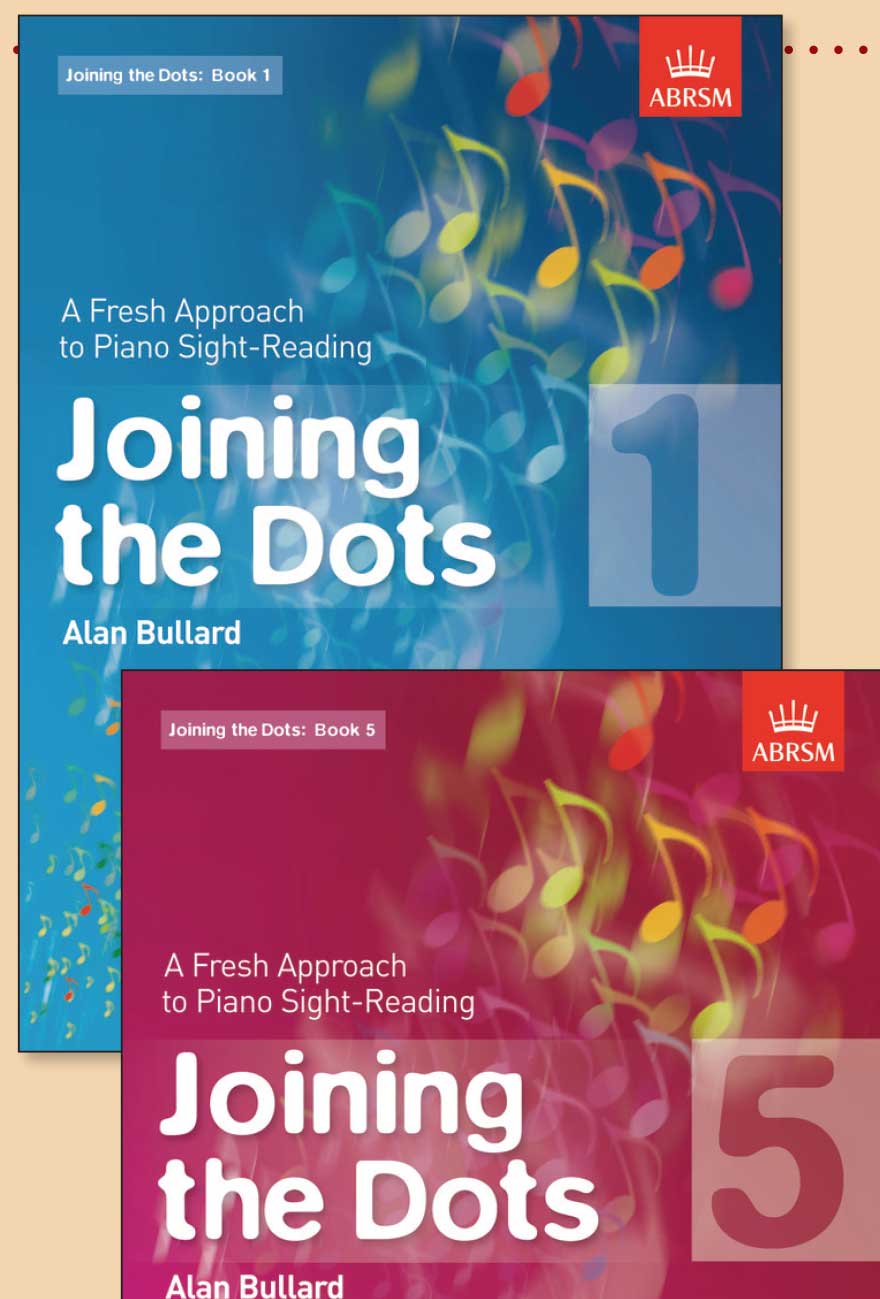
Probably the most revolutionary rethinking of a sightreading series, Joining the Dots asks students to improvise as part of their sight reading practice! Improvise!! This series is published by ABRSM, so naturally each graded book matches the (much more difficult than AMEB) sightreading requirements for ABRSM exams.
- The music is musical! And with so many different styles included, students learn to be skilled sight-readers of any notated piano score.
- Each new key is introduced via Key Features exercises, designed to familiarise students with the feel of the key.
- Workouts are a revision of known or newly introduced keys. One of the two workouts is repeated (transposed) in each key, so students can a strong understanding of how the black/white key pattern maps onto the major or minor pitch pattern.
- Make Music is the main point of difference, giving students musical ideas and patterns to explore. This away-from-the-page learning is fundamental to developing physical fluency in the tonality at the keyboard, and it’s exciting to see an examination board (no less!) leading the way with this pedagogical approach.
- Read and Play has short pieces for sightreading practice that incorporate the elements covered in the preceding Key Features, Workouts and Make Music sections.
- More Pieces To Play at the end of the book can be used as sample examination sightreading tests.
Use these books with:
- Students taking ABRSM exams (the books are a perfect match)
- Students taking any other exams (the grading is about right for Trinity College, but Grade 1 would be suitable for AMEB Grade 2 students).
- Students who enjoy improvising, creating and exploring.
AMERICAN POPULAR PIANO
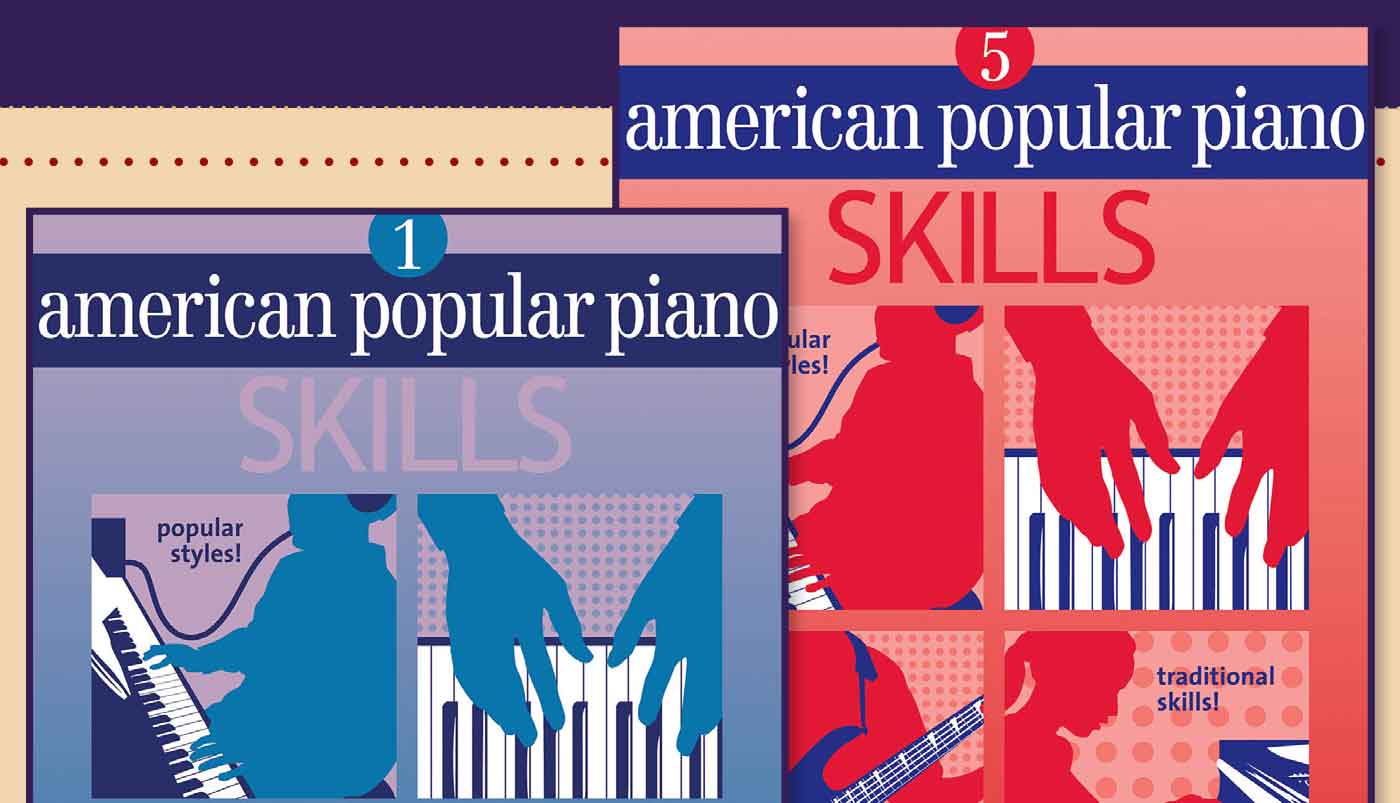
And for something completely different, let me recommend Christopher Norton’s American Popular Piano Skills books. These books are designed to work with the rest of the American Popular Piano series, but these Skills books work as a stand-alone sightreading method! These books are well-designed to help support the development of audiation (being able to imagine music), and great audiation is the foundation of great sightreading.
- Each book has at least 16 weeks of activities, presented as 4 Units of work, each unit comprising 4 Modules.
- Each unit of work has 2 sets of tests to monitor the skills being developed.
- Brainthumpers: tiny (one or two bar) pianistic gestures and hands-together rhythms for the student to master.
- Prepared Sightreading Pieces: just what you’d expect
- Aural Skills Activities: these are divided into rhythmic and pitch activities and involve the student reading, singing, clapping, answering questions and writing in missing notes.
- There is also a small technic section in each module, but this is of less interest if you are using these books as a sightreading series.
Use these books with:
- Students with involved parents (there is a lot of text on the page, and parents may need to keep younger students focused).
- Students who enjoy routine.
- Students who are using American Popular Piano repertoire and/or etudes books.
Finally, for advanced students (Grade 6 and onward) there is really nothing better their sight reading skills than to learn jazz arrangements of tunes they already know. Familiarity means the student is already committed to keeping on going (!) but the jazz arrangement means that students are reading unexpected accidentals, harmonies and rhythms – perfect sight reading training!
lush, smoky, clever arrangements.
My favourite book for this purpose in 2012: Hal Leonard Jazz Piano Solos Disney book – lush, smoky, clever arrangements of songs from Disney movies (think When You Wish Upon a Star, Chim Chim Cher-ee, Can You Feel the Love Tonight, Beauty and the Beast, etc.).

